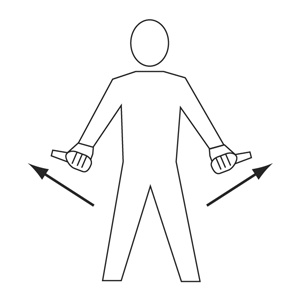
Outward motion with Thumbs
PULL CHOCKS
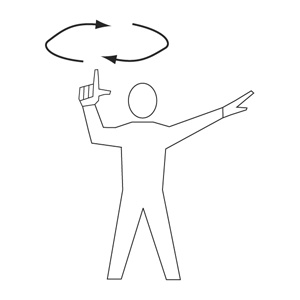
Circular motion of right hand at head level with left arm pointing to engine.
START ENGINE
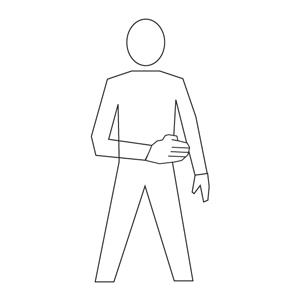
Raise arm, with fist clenched, horizontally in front of body, and then extend fingers.
RELEASE BRAKE
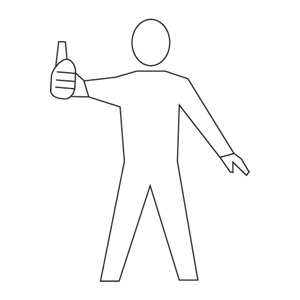
Thumb up
OK or YES
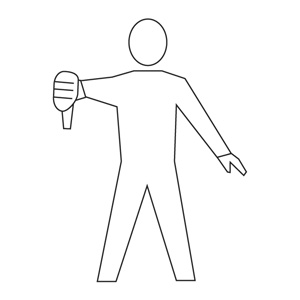
Thumb down
NOT OK or NO
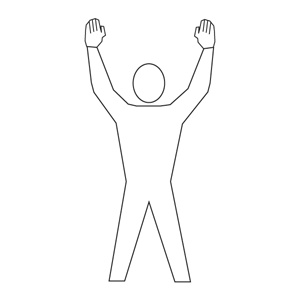
Arms above head in vertical position with palms facing inward.
THIS MARSHALLER
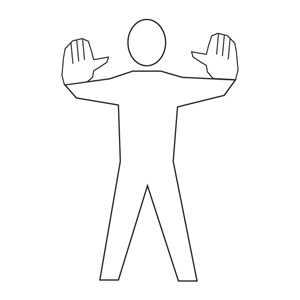
Arms a little aside, palms facing backwards and repeatedly moved upward and backward from shoulder height.
MOVE AHEAD
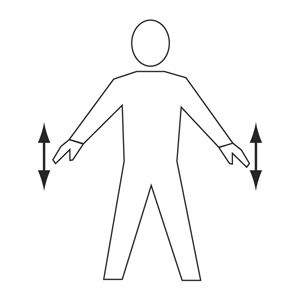
Arms down with palms toward ground, then moved up and down several times.
SLOW DOWN
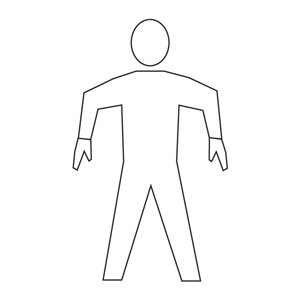
Arms extended with forearm perpendicular to ground. Palms facing body.
HOT BRAKES
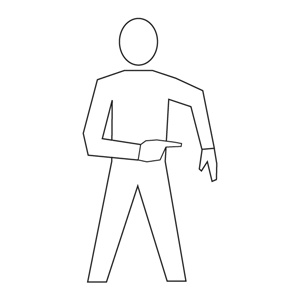
Arms extended with forearm perpendicular to ground. Palms facing body. Gesture indicates right side of aircraft.
HOT BRAKES - RIGHT SIDE
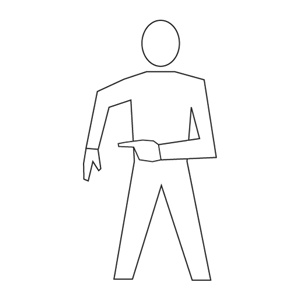
Arms extended with forearm perpendicular to ground. Palms facing body. Gesture indicates left side of aircraft.
HOT BRAKES - LEFT SIDE
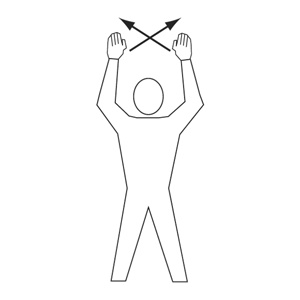
Waiving arms over head.
EMERGENCY STOP
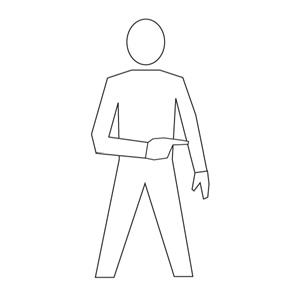
Right or left arm down, other arm moved across the body and extended to indicate direction of next marshaller.
PROCEED TO NEXT MARSHALLER
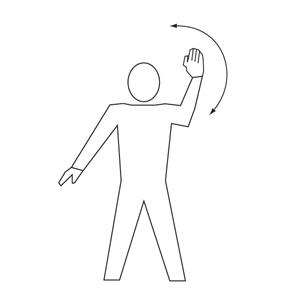
Point right arm downward, left arm repeatedly moved upwardbackward. Speed of arm movement indicating rate of turn.
TURN TO THE LEFT
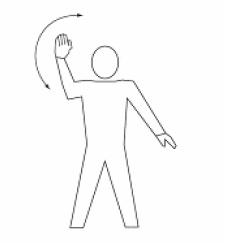
Point left arm downward, right arm repeatedly moved upwardbackward. Speed of arm movement indicating rate of turn.
TURN TO THE RIGHT

Arms crossed above the head, palms facing forward.
STOP
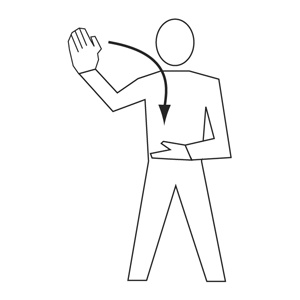
Make a chopping motion with one hand slicing into the flat and open palm of the other hand. Number of fingers extended on left hand indicates affected engine.
FEATHER/FUEL SHUT OFF
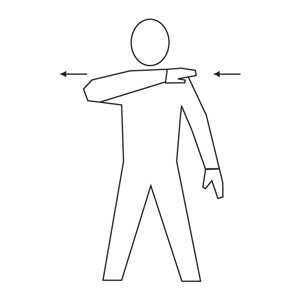
Either arm and hand level with shoulder, hand moving across throat, palm downward.
CUT ENGINERS
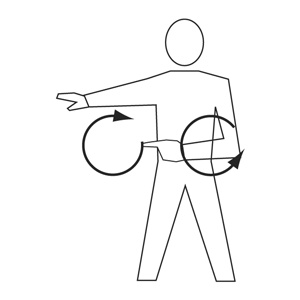
Make rapid horizontal figure-of-eight motion at waist level with either arm, pointing at source of fire with the other.
FIRE ONBOARD
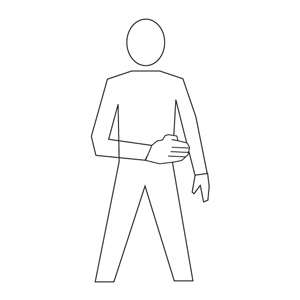
Raise arm and hand, with fingers extended horizontally in front of the body, then clench fist.
ENGAGE BRAKE
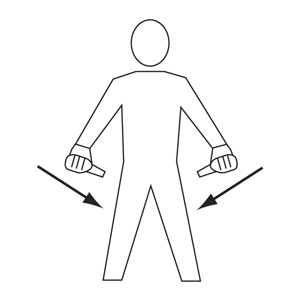
Inward motion with Thumbs
INSERT CHOCKS
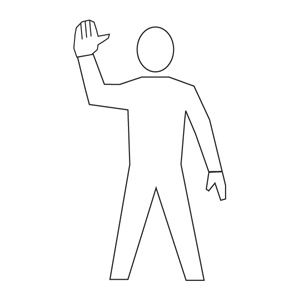
Right arm raised; elbow shoulder height; palm forward.
MARSHALLER FINISHED